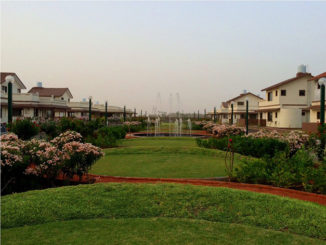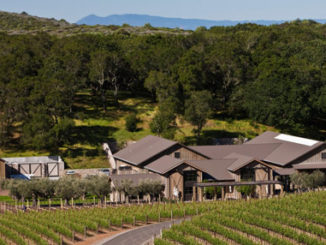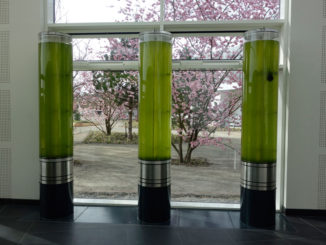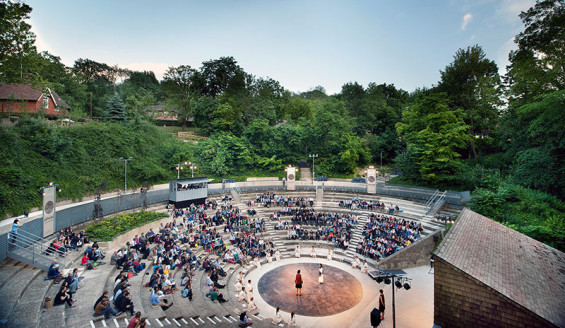
In 2012, Studio Octopi were appointed to undertake the modernisation of the theatre with the intention to reopen in time for a performance of Antigone in June 2014. The original ‘temple’ theatre building was condemned in 2009, so the College needed a new theatre building or Skene that would enable increased versatility of the theatre. Forward of the Skene, sits the stage and orchestra. In the 1960’s when the stage was extended the circular Orchestra was truncated, there was now an opportunity to reconnect the concrete terraces with the stage. Finally, circulation had always been a victim of the theatre’s success. With the entrance almost impossible to find and precariously steep stairs down into the auditorium reorientating the theatre to offer improved access was crucial. Within the theatre, years of undergrowth and landslides further hampered circumnavigation of the auditorium.
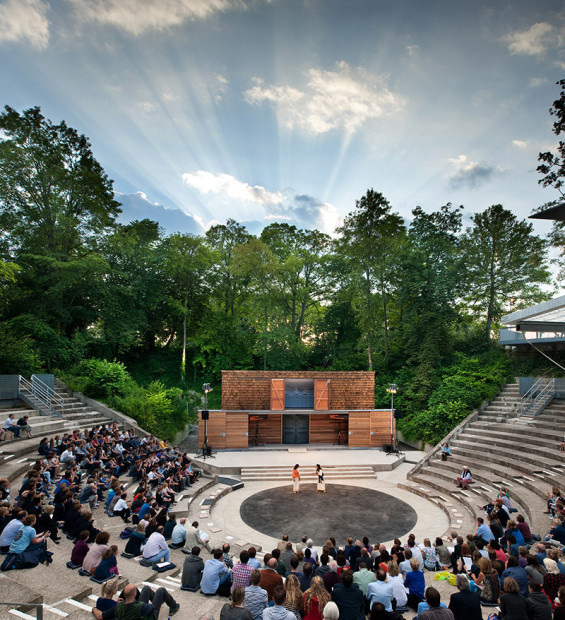
Architectural Vision
From Studio Octopi’s first visit they were intent on preserving the wild and picturesque setting. Between 2009 and 2012 the original theatre building was lost through decay and an eerie calm descended on the site. As nature took hold, there was a time when the theatre might have been permanently lost for future generations of Bradfieldians. In response to the theatre’s fall from grace, Studio Octopi commissioned Petr Krejčí to make a film about the theatre’s descent into a ruin. (See the film here http://vimeo.com/52746647). The making of the film in Autumn 2011 assisted the architects through the design process by reflecting on the theatre’s fragility in the face of a rampant nature.
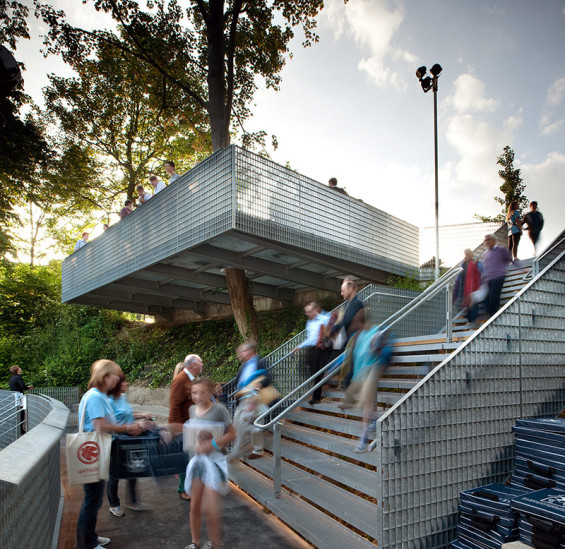
Forming a new entrance to the theatre was key and this naturally informed the journey thereon in. Set out over the ruins of the previous entrance stair, the new Agora commands spectacular views over the auditorium. Leading off the granite terrace with the donors names engraved into it, a galvanised metal deck cantilevers out over the terraces below. Punctuating the deck is one of the most elegant trees on the site. Tall and graceful its presence signals the determination to keep nature at the forefront of the architectural proposals.
Descending into the theatre the Grand Staircase effortlessly glides over the chalk cutting below. The ‘wishbone’ stair starts as 2no. 1.8m wide flights, before connecting at the landing to create a 3.6m stair which lands on the perimeter Walkway. Each step is lit from a linear LED mounted to the underside of the tread above. At dusk the LEDs provide a spectacular floating stair suspended over the chalk and undergrowth below.
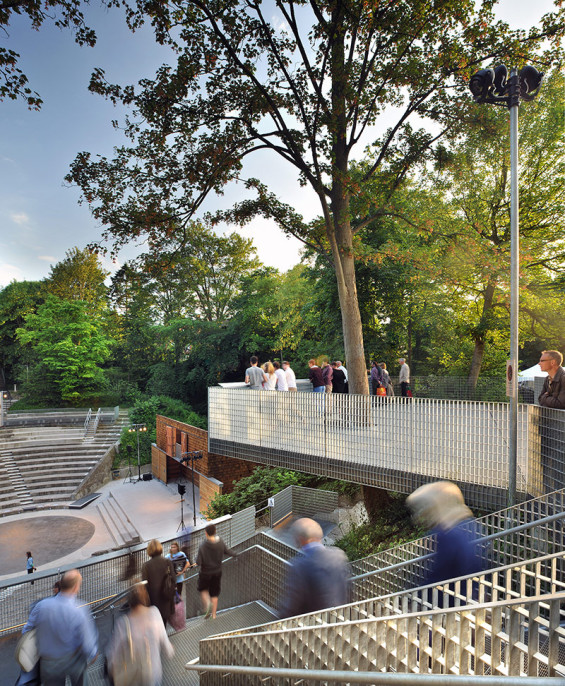
The black pigmented concrete Walkway that runs around the perimeter of the theatre is cast over the original upper three terraces. The Walkway provides improved circulation and a duct to run electrical services without disrupting the original terraces. The walkway is 85m long and spans almost the full 270’ of the theatre terraces. Off the Walkway there are five staircases to distribute the audience down onto the existing concrete aisle steps to their seats. As well as circulation the Walkway offers a peripatetic vantage point during performances. The mesh galvanised balustrade panels bolted to the edge of the Walkway concrete each have a leaning plate on top, a place to contemplate the performance from.
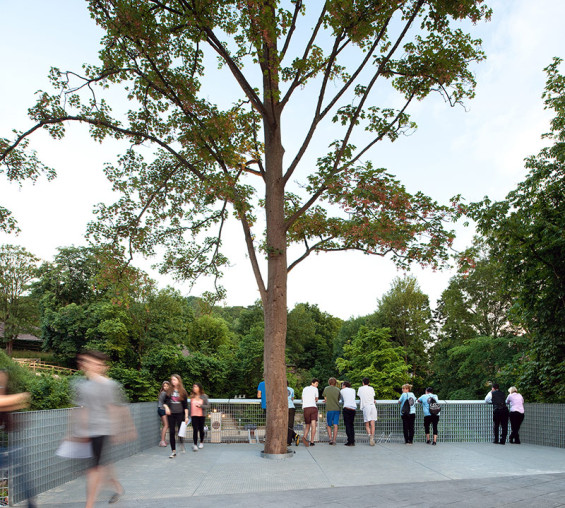
Halfway along the Walkway, centred to the Skene is the Control Hut. From here the permanent house lighting and temporary performance lighting is controlled. The Hut is constructed entirely from galvanised louvered panels and cantilevered from the Walkway. To the front, a 4.3m wide hinged panel rises on gas struts to provide uninterrupted views of the stage. The 10mm thick galvanised steel plate roof has one of five performance lighting rigs mounted on top.
The Skene function and siting is based on the traditional Greek theatre layout. From the reinstated Orchestra disk, four steps rise to the stage, with the Skene located towards the rear of the stage. Unlike the previous temple which suffered from having scenery fixed directly to it, the Skene has been designed to provide support for temporary scenery on the stage. The intention being that this extends the life of the Skene. The building is clad in cedar shingles and to the sliding doors at the front, cedar batons. Internally the structure is entirely standardised and exposed, providing opportunity for a cost effective but honest and striking workspace. The front elevation is designed to be fully openable at ground floor (with a series of sliding doors) and partially at first floor (with a series of hinged double doors). The cantilever structure at first floor level enables the loggia to be fully opened-up (12m clear span) with no structural elements to constrain the theatrical use of the space. There are two changing rooms with storage and pre performance facilities (toilets are provided in the adjacent Music Schools).
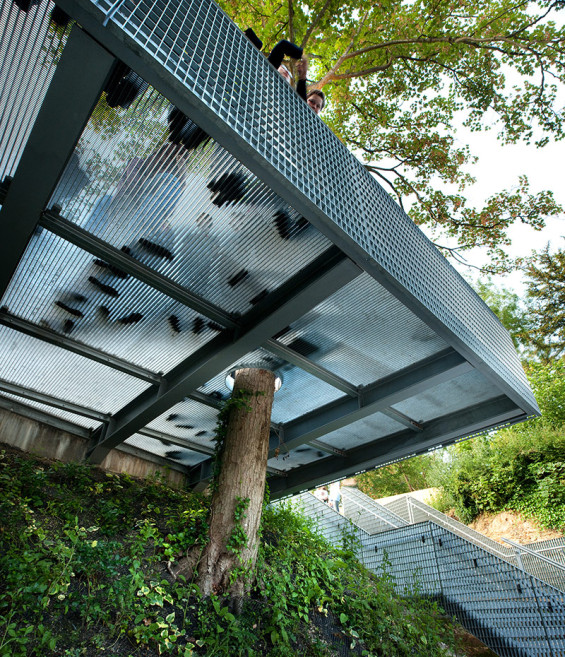
The Bradfield Greek Theatre continues to feel part of a larger English garden, wild and intoxicating. At the height of summer, approaching dusk, the theatre takes on a truly unique appearance as the sky is viewed through the oculus formed by the enclosing trees. As the light drops the theatre lights take over, and the magic of outdoor performance comes alive.
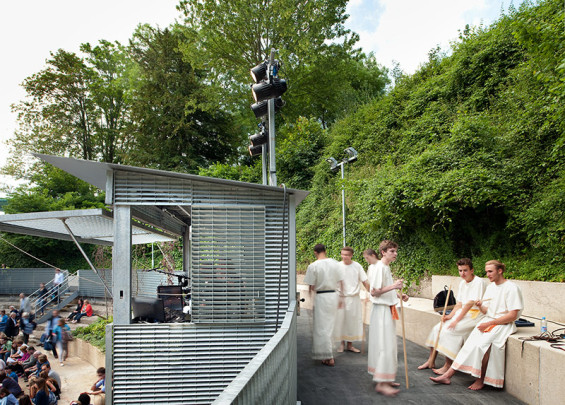
History of the Greek Theatre
Bradfield College is an independent school situated in the Berkshire countryside. At the heart of the school, is a 1000 seat amphitheatre formed from a disused chalk quarry. Since Antigone in 1890, every third year the school stages a full Greek play that is world-renowned.
Head Master Dr Herbert Branston Gray started the Greek plays to save the school from bankruptcy,. Plays have now been staged for almost 150 years. Dr Gray initially had students work on forming the theatre before reverting to builders to create his own version of Epidaurus in Berkshire. The students who act in the Greek tragedies receive no formal training in speaking ancient Greek, and have only nine months to learn the lines and direction, while keeping up with their other studies. The Greek Theatre closed in 2009 for restoration and, following a £1.3 million appeal, reopened with a performance of Antigone on 20th June, 2014.
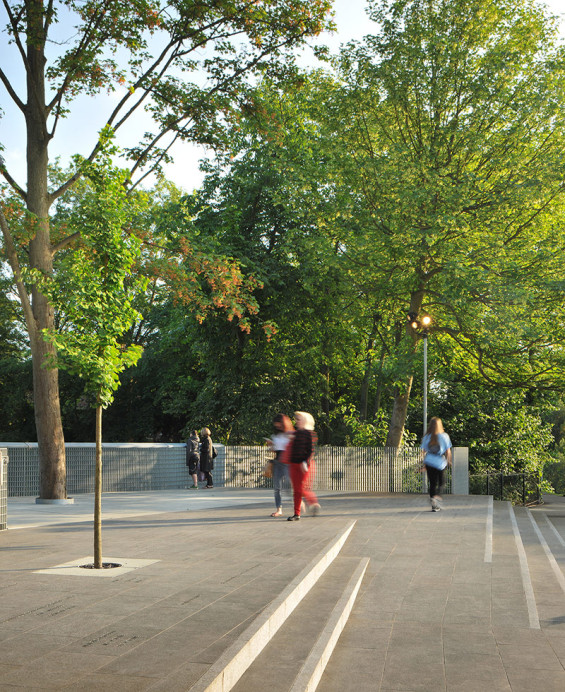
The theatre is now suitable for Greek, Shakespeare or musical performances albeit within seasonal restrictions. There are also plans for the theatre to re-establish connections with the local community and external theatre companies.
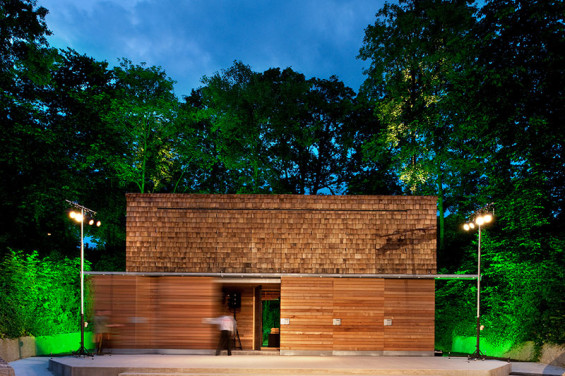
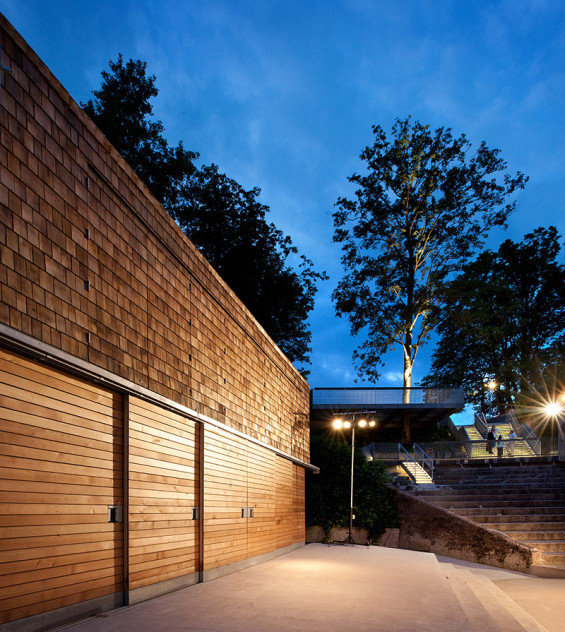 In 2012 Studio
In 2012 Studio
Bradfield College Greek Theatre
Location | Bradfield College, Bradfield, Berkshire RG7 6AU
Architects | Studio Octopi
Photography | Philip Vile
Text | Studio Octopi
Client | Bradfield College, Bradfield, Berkshire, RG7 6AU, www.bradfieldcollege.org.uk
Contractor | Feltham Construction
Project Manager | Synergy Construction & Property Consultants
Cost Consultant | Synergy Construction & Property Consultants LLP,
Structural Engineer | Milk Structures
Theatre Consultants | Charcoal Blue (concept work by TheatrePlan)
Electrical Consultant | Q & Co Oxford Ltd;
Graphic Designer | Phil Baines

